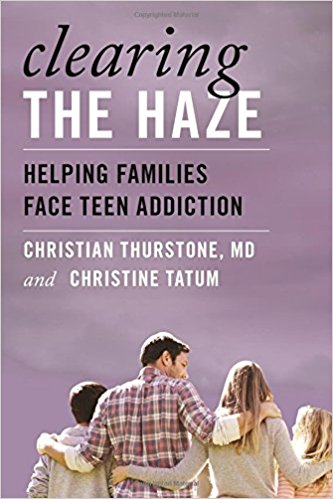I love journalism. I love many journalists. I have a long track record of going to the mat to improve and protect journalism.
Lazy journalism? That’s a different story entirely.
Please, allow me to dissect (or is that “rip to shreds?”) a New York Times story by Jesse McKinley about evangelical Christian minister Pat Robertson’s declared support for marijuana legalization. It’s a fantastic example of how lazy journalism compounds ignorance — and fails miserably to inform drug-legalization debates accurately and responsibly.
Seriously, the only thing even remotely amusing here is that many people who call Robertson insane on every other day of the week are now trumpeting his brilliance. But I digress. This story is a chief example of what’s wrong with too much of the journalism spinning out of today’s news organizations.
First, read the story.
Now, let’s take a look at the story’s substance and how it’s structured:
1. Reporter McKinley oh-so-dutifully quotes Mr. Robertson, allowing him to spout his opinions. Fine. After all, that’s what this story is about.
2. McKinley immediately follows with positive reaction from the executive director of an organization of current and former law enforcement officers who support marijuana legalization (note: the organization is supported by many more former officers than current ones … but I digress again — and also will address that). Fine.
3. McKinley then follows with a couple of paragraphs of reaction to Mr. Robertson’s opinion from another drug-legalization group.
4. Then McKinley allows Robertson to spout again. Only this time, the reporter dutifully — and, apparently, unblinkingly — quotes Mr. Robertson stating information as fact, not as opinion. Note his quote: “Prisons are being overcrowded with juvenile offenders having to do with drugs. And the penalties, the maximums, some of them could get 10 years for possession of a joint of marijuana. It makes no sense at all.” (Why, you’re right, Mr. Robertson! It makes no sense because it’s not true. This reporter should’ve fact-checked you. Even if you were completely right — which you aren’t — the public should have been presented with facts confirming/supporting your announcement. Some honest digging would’ve shown your assertion isn’t factual — but that would’ve been a real drag on the reporter’s time, I’m sure. Yet again, I digress.)
5. Then McKinley gives us a couple more paragraphs from the leader of a Chicago-area consortium of hundreds of black clergy members. This leader also confirms that she personally supports marijuana legalization.
6. Next, we get to hear from Mr. Robertson again. This time he is permitted by the reporter to tell us other evangelical Christian leaders would agree with him if only they understood “the facts” as he does. (Really? Sure would’ve been nice if this intrepid reporter had contacted one just to float this idea for kicks — and to bring some desperately needed balance to this story.)
7. Then, in the 19th paragraph of this story of 26 paragraphs, we get two sentences explaining that one Christian organization, Focus on the Family, declined to comment about Mr. Robertson beyond saying that it does not support the use of marijuana for either recreational or medicinal purposes. (Reeaaaally? Only one organization could be found? No drug-free groups? No addiction counselors? No doctors? No law enforcement officers? No teachers? No concerned parents? Were all of the other pastors, priests, rabbis, imams and soothsayers in the United States unavailable for comment?)
8. Then we get a few more sentences — and a few more direct quotes — in which Mr. Robertson explains how he sees no difference between smoking marijuana and drinking alcohol (never mind that he has no medical training — and that the nation is filled with highly qualified physicians, such, as, oh, say, the guy whose website you’re visiting, who would be more than happy to explain these vast differences to Mr. Robertson — and to the New York Times. But hey, if the quality of reporting has been so shabby up to this point, why not go for broke?!)
9. Then the reporter presents us the executive director of one of the drug legalization groups again — the one led by current and former law enforcement officers. Though this man has no formal training in Christian ministry or apologetics, Reporter McKinley explains that he’s a Christian and allows him to say Mr. Robertson’s position is actually in line with “the Gospel.” From there, we get a little sermonette and quote about Jesus, who would not “condone the imprisoning of people for nonviolent offenses.”
10. The end of this story takes us back to Mr. Robertson again, of course. The last four paragraphs allow Mr. Robertson to tell us more about Jesus and how he’s been “assailed” by theologians who disagree with him (all of whom were, presumably, unavailable for comment).
11. Then, how could you not be blown away by the clever, clever little play on words that final quote is?! Mr. Robertson tells us he just wants to be on the “right side,” and that he’s on the “right side.” Right side! Get it?! Haaaaa! Isn’t that tooooo funny? Oh, what a witty writer this is!
And we wonder why people bash news organizations and distrust journalism. This report is so pathetic it’s enough to shake even my faith in them.
OK, so let’s do a little fact-checking, shall we? What about some of the assertions the New York Times allowed Mr. Robertson to make without anyone/anything to counter him?
I contacted federal law enforcement officers in Colorado yesterday — folks who told me they would’ve been happy to speak to the Times if it had called. (One thing to note: the reason it can be so tough for reporters to get on-the-record statements from local, state and federal law enforcement agencies is that they’re quickly accused of lobbying when they come out against drug legalization. Recently, the Office of National Drug Control Policy even issued warnings to offices of its High-Intensity Drug Trafficking Areas, which are sitting on reams of statistics that blow Mr. Robertson’s claims out of the water. So, when you read about this little group of “current and former” law enforcement officers who are pushing for legalization, it’s important to understand that for every one member that group has, there literally are thousands of law enforcement officers who think they’re nuts.)
My law enforcement contacts passed along a document drafted by several local, state and federal government officials representing a variety of departments and areas of expertise. It’s not hard to find — except, perhaps, if you’re a reporter who doesn’t bother to look for it. The information it contains should give anyone reason to question whether Mr. Robertson — and people who make similar arguments — are correct.
Here goes — from the document, produced in part by the Colorado Drug Investigators Association (I know. I know. They’re a part of the big government conspiracy that is designed to ensure they always have jobs.):
Question: One of the main arguments of the pro-legalizers is the number of people arrested and in prison for marijuana possession and its tremendous impact and cost to our criminal justice system. Is their information accurate?
Answer: Since the truth is not on their side, many have a tendency to misuse statistics and only provide partial information. For instance, in a debate, one pro-legalizer said there were over 800,000 arrests for marijuana possession in the United States. What he failed to point out is that most are minor misdemeanors, resulting in fines, diversion or informal probation and not jail. In many states like Colorado, possession of certain amounts results in only a citation with a fine. In Colorado, possession of 2 ounces or less of marijuana (112 to 168 marijuana cigarettes) it a citable offense (like a traffic ticket) with a fine of $100. Other facts related to this issue include:
* The FBI Uniform Crime Report (2007) reveals that only approximately 13 percent of all arrests in this country are for drug violations. In Colorado, the number of arrests is even less at only 7 percent. Out of 186,030 adult arrests in Colorado for 2009, only 14,050 were for drug offenses. Its even less for juveniles with 3,332 arrests. This is according to Crime and Criminal Justice in Colorado 2010.
* Crime and Criminal Justice in Colorado also reports that drug arrest data collected and analyzed of 2006 district court files showed that 56 percent were for methamphetamine, 31 percent for cocaine/crack and only 18 percent for marijuana.
* According to the Bureau of Justice Statistics 2008 report, 80 percent of state inmates are in prison for crimes other than drug offenses and only .3 percent are imprisoned for possession of marijuana. Those in prison for possession often are a result of plea bargaining. An example of plea bargaining is when an individual is arrested for distribution or possession for sale of large amounts and pleads to possession to get a lesser sentence. For instance, in the federal prison system, only 1.6 percent were sentenced by the federal courts for possession of marijuana. Of those federal inmates, the median amount of marijuana possessed was 115 pounds. (Editor’s Note: 115 pounds?!) This seems a little excessive for simple possession for personal use and is typical of a trafficker plea bargaining down to simple possession (Editor’s Note: You call THIS simple possession?!).
* In Colorado, only 1 percent of court commitments to prison in 2010 involved marijuana charges. There were more court commitments to prison for traffic-related offenses (185) as for all marijuana offenses (91).
You can see how many pro-legalizers disregard facts and exaggerate statistics. If you listen to them, you would think our prisons are packed with “innocent‟ victims of our marijuana laws, which is totally false. In fact, our prisons are packed with individuals who use drugs and commit crimes while under the influence.
****
Question: Can you back up that statement that most people in prison are there related to their drug use?
Answer: That’s not a problem. For instance:
A study by the U.S. Department of Justice showed that 35 percent of inmates reported they were under the influence of drugs at the time they committed their crime. Marijuana and hashish were cited as the most frequently used at the time of the crime.
A study published in the International Journal of Addiction involving interviews with 268 inmates in New York prison for homicide revealed that 70 percent had used marijuana within 24 hours of committing the crime and felt they experienced some effect from the drug at the time of the crime. Twenty-five percent felt the homicide was related to their use of marijuana before the crime.
A study conducted in Denver, Colorado revealed that 39 percent of violent crime arrestees and 34 percent of domestic crime arrestees tested positive for marijuana.
Pro-legalizers state that, by legalizing drugs, it would result in a reduction in costs to the criminal justice system. However, just the opposite has shown to be true using alcohol, a legal substance, as a model. In 2008, there were 2.7 million alcohol-related arrests or 40 percent more than for all the illicit drugs combined. Wasn’t legalization supposed to reduce crime, not increase it?
Young people who use marijuana weekly are nearly four times more likely than non-users to engage in violence.
Eighty percent of court commitments to Colorado prisons in FY2010 had a moderate to severe substance abuse problem.
In 2010 in Denver, over 50 percent of arrestees admitted to being regular marijuana users. Urine tests among adult male arrestees showed 40 percent tested positive for marijuana.
##



We welcome all thoughtful comments, but please abide by our commenting rules